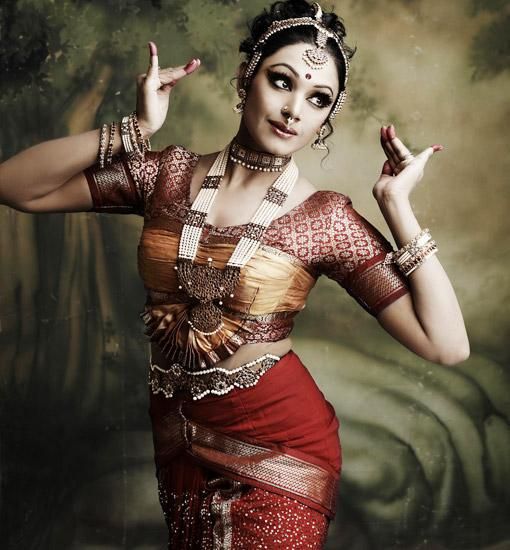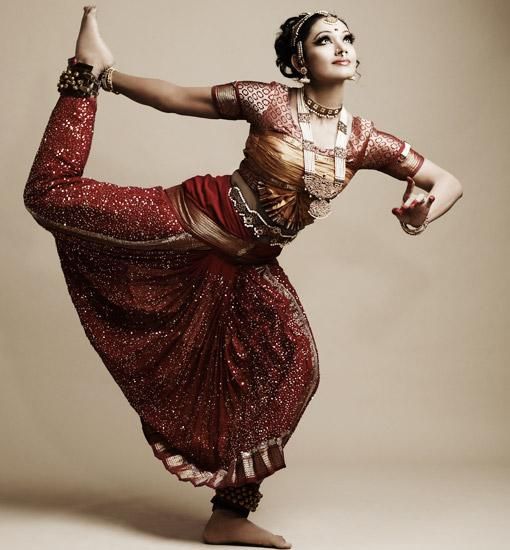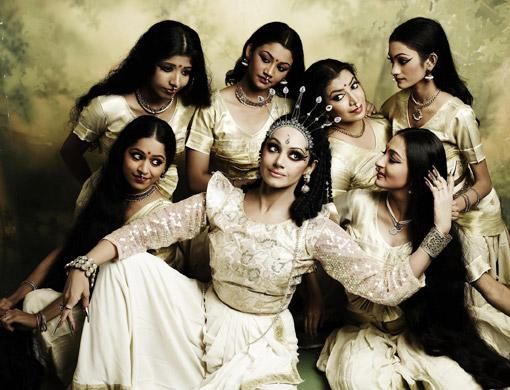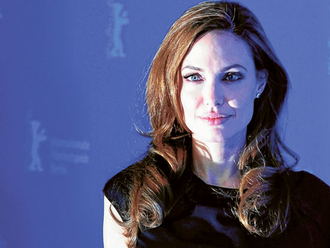South India's finest actress Shobana talks exclusively to e+ about her dramatic take on an Indian epic.
She's an actress par excellence and an enchanting danseuse. She's enraptured audiences on screen and on stage with her spectacular performances. Her sparkling eyes and expressive gestures can tell a thousand stories. A quintessential beauty, Shobana needs no real introduction to true admirers of art.
Described as an institution in her own right, Shobana is one of the most prominent South Indian artistes, who balances acting and dance with effortless grace. It's almost impossible to look at Shobana in a one dimensional way – as a dancer or as an actress, she exemplifies each talent wholly and yet remains greater than the sum of the two parts.
Coming from an illustrious background, with aunts – the famous Travancore sisters – Lalitha, Padmini, Ragini,
all exponents of dance and acting, it's no surprise that Shobana's initiation into art at the tender age of three fortuitous inevitability.
A disciplined dancer who trains under the legendary Bharathanatyam dancer, Chitra Visweswaran, Shobana emerged as an independent performer and choreographer in her twenties. In 1994, she set up the Kalarpana Trust (school of dance) in Chennai.
In fact, many believe that Shobana is solely responsible for giving the traditional Indian dance form Bharathanatyam a new lease of life. She has embellished the traditional art with the right mix of innovation and tradition, making it equally appealing to the young and the old.
Her acting career began when she was nine but her real initiation into Malayalam cinema was in 1984 with Balchandra Menon's April 18. Her realistic portrayal of a simple girl-next-door appealed to audiences instantly and she went on to work in numerous films.
Shobana's true recognition came with Fazil's Manichitrathayu. Her enthralling performance in this film is etched in the mind of every Malayali film aficionado. The character explored her true potential both as an actress and a dancer, winning her the prestigious National Award for Best Actress.
Consequent to the award and as if the honour instilled a sense of responsibility in her, Shobana turned extremely selective about her work. A few years later, she won the same honour for her work in close friend and South Indian fimmaker Revathy's Mitr, My Friend. Her film career spans nearly 90 films and she continues to hold her passion for acting and her love for dance in a fine balance. Her artistic contribution has been honoured with the Padmashri.
Come January, Dubai too will get a glimpse of Shobana's magic. She will showcase her musical extravaganza Maya Ravan (mystical Ravan) at the Shaikh Rashid Hall. Organised by Good Times Global, the event will be held on January 9 and 10. Maya Ravan is her interpretation of the spectacular Indian epic, giving more prominence to the villainous character of Ravan (whom she essays on stage).
In an exclusive interview, the actress throws light on her interpretation of The Ramayan.
Maya Ravan is a lavish musical drama, at par with Broadway musicals. How did the concept become a reality? And how long did it take?
We as artistes are always on the lookout for newer concepts, often exploring our own traditions. So this drama came about when I felt that my students, who have been training for nearly 10-15 years, may not get an opportunity to showcase their talent as much as I did. So we worked on The Ramayan, which gives an opportunity for everyone to take part because of the scale of the epic. It's a subject that all age groups can appreciate. And personally, the tradition of The Ramayan has been passed down to me by my aunts - Lalitha, Padmini and Ragini. It took me two years to complete the production. It was because the medium is different. It involves a
lot of hand gestures and body movement in a theatrical manner, dialogues like in films, and extravagant costumes like in the olden day musicals. Maya Ravan is like a mini movie, with a two-hour sound track. So with my background in cinema, theatre and classical dance, and with the incredible support from my students, I decided to put it all together. This is basically a great work of production: there's
a lot going on backstage. We have about 36 costume changes! It's a serious classical show but with a few Hollywood inspired twist to bring energetic novelty to it.
Is Maya Ravan from Ravan's perspective?
No it's not. It is The Ramayan, although it highlighs the role of Ravana more. We have woven in Ravana from the beginning of the script. It's in shades of greys, not black or white. And it's our interpretation. We know that Rama went to the forest, but we don't really know how he felt at that moment. We know that Kaikayi liked Rama more than her own son, but we don't know why she changed her mind later on. This is our attempt at filling in the gaps. We can't change the beautiful story of The Ramayan. So we have imagined and visualised these unsaid and unexplained moments in the epic.
You have roped in celebrity voice-overs by Tabu, Naseeruddin Shah, Milind Soman and Suhasini Maniratnam. How did you select the voices for the musical?
When the script was completed I decided to ask Naseeruddin Shah, Tabu, Jackie Shroff, Milind Soman, Suhasini Maniratnam, Revathy and Rohini whether they would want to be part of it. I don't know most of them, but when they read the script, they loved the concept of something entertaining, yet academic. They appreciated the innovation and volunteered to do it for me. From then on, the journey was easy.
What dance forms have you used in the musical - is it a bharathanatyam based dance drama or dance fusion?
Fusion is when you marry two things. Maya Ravan is very much a fusion. But when you hear the word fusion it gives rise to an imagery of Shivamani on the drums and Neeladri on the sitar, but it's not the case in Maya Ravan. This is an amalgamation of classical mudhras (classical dance expressions which convey a lot of meaning). We only use classical mudhras to co-ordinate theatrical body movements. The dialogue, which forms an integral part of the production, is actually fixed, like in films. So when you have theatrical body movements, you would expect the dialogue to be dramatic but it's not, it's natural. And when the dialogue is natural you expect the acting to be natural also. Again in this epic it's not, it's very classical due to the mudras! So the entire combination has been put together in a way that it doesn't strain the intellect of the audience.
How difficult is it to make a musical in India? Is there a market for them?
We are doing extremely well but I can't pinpoint a reason why we are doing well. I think it is because people are open to seeing new concepts. But it's not only new, it's also good. Personally, I would prefer to watch a two-and-a-half hour classical show by an artiste who does it exceedingly well. I would prefer that to going to a circus or a new, modern dance show. Basically it depends on how you do whatever you do. You just don't innovate for the sake of innovation. It has to
be a natural progression in your creative thinking. That is the only thing that will motivate the artiste and it will also motivate the viewers to watch it.
You have toured the US and India with this musical. What prompted you to bring Maya Ravan to Dubai?
Dubai was shortlisted by our organisers. But on deeper introspection, Dubai is ideal because of its large cosmopolitan crowd. We will be touring a few more cities in the Gulf, after which we will head
to Australia.
You started dancing at the age of three. With an impressive artistic lineage, was dance in your genes?
When you are three years old, you really don't know what you are doing. This artistic life is a very natural part of me. It's fun and it's like any other work. I can't intellectualise it. It's also a lot about celebration.
So how would you describe Shobana? As a dancer or as an actor?
I would describe myself as creative.
The Event
- Date: January 9, 10
- Venue: Shaikh Rashid Hall, Dubai
- Time: 8 pm
- Prices: Dh100, Dh200, Dh500
- Contact: 043355120














